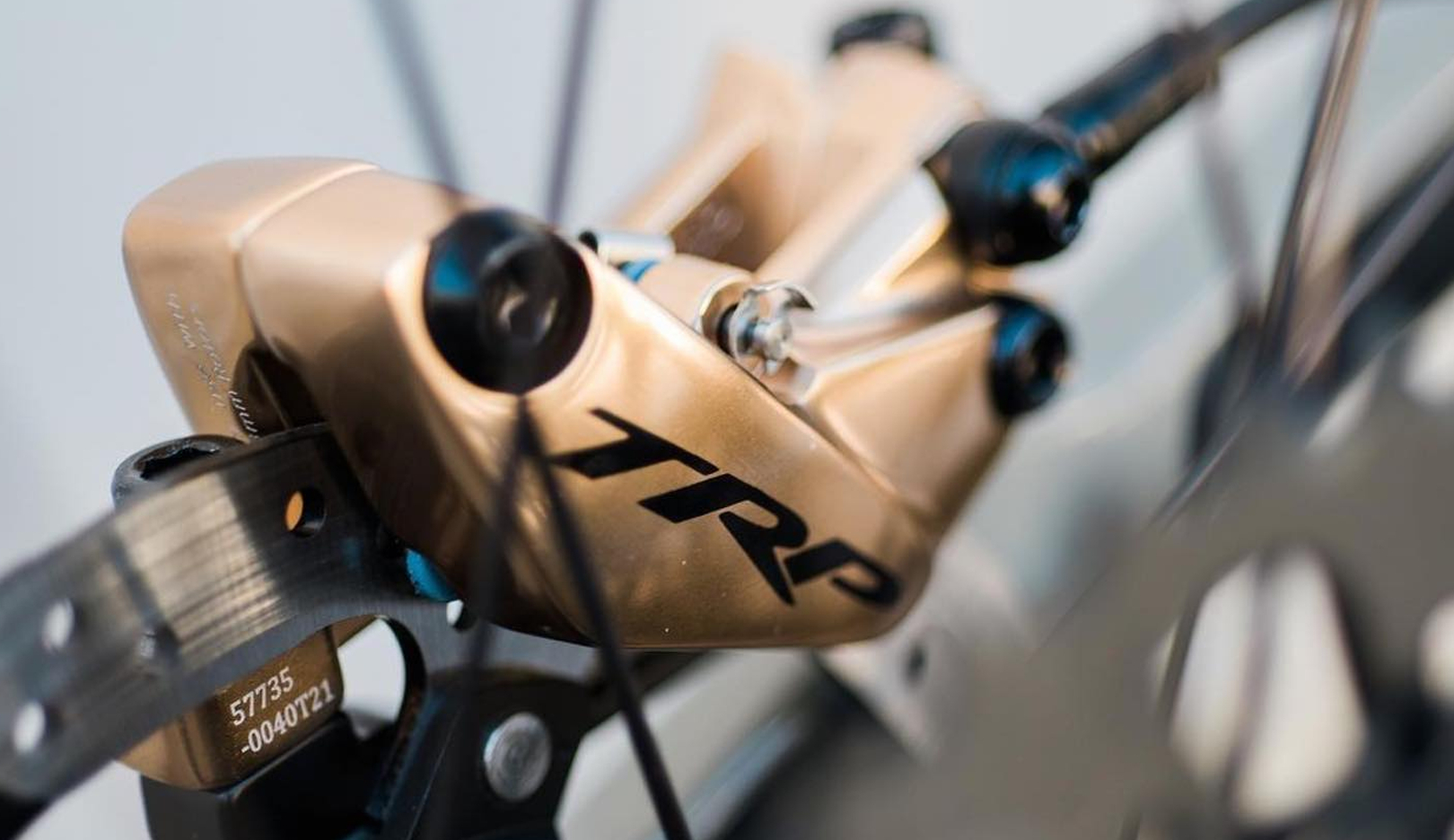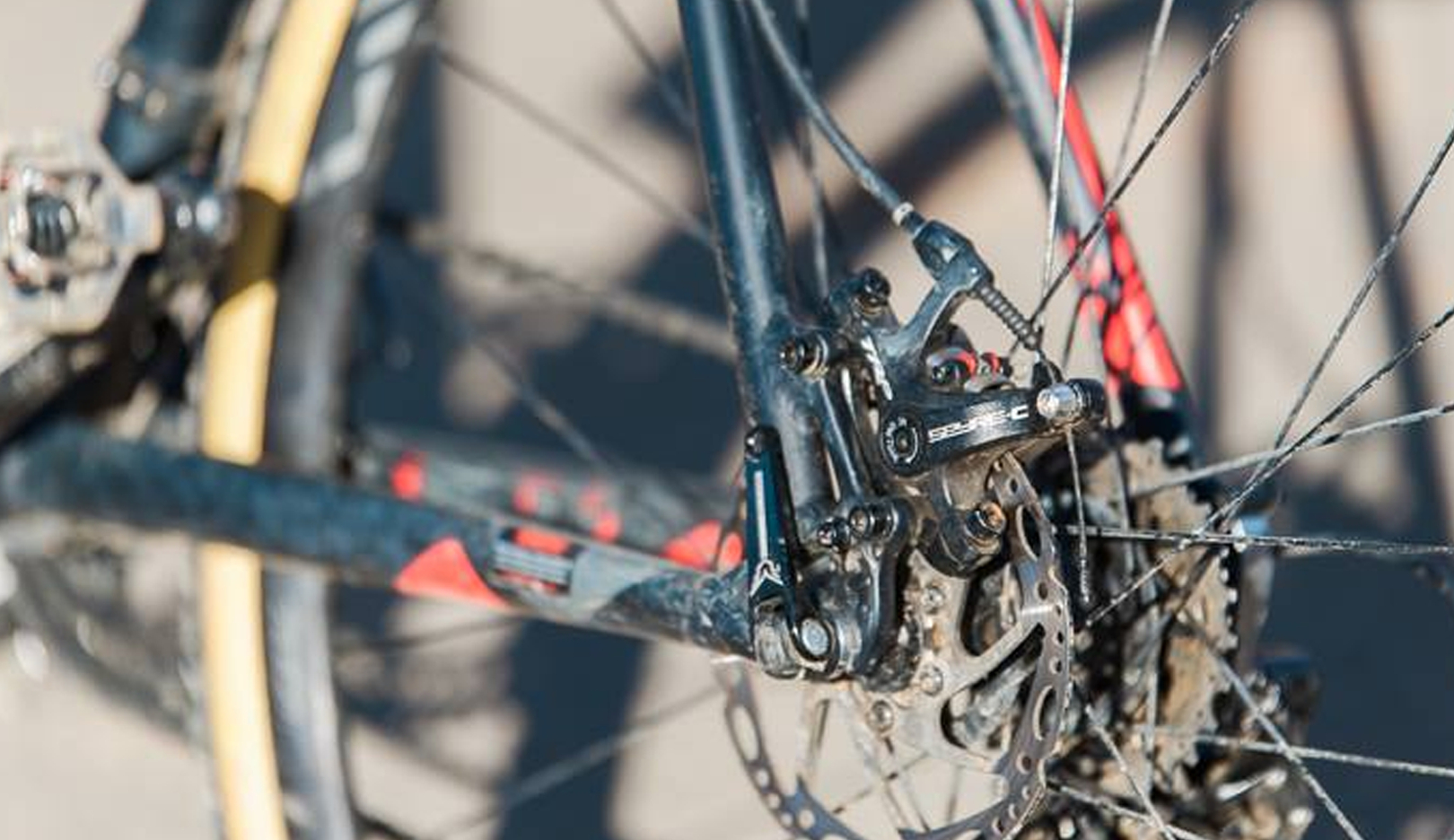Types of bike brakes – understanding the differences between common bike brakes
Explaining one of the most important parts of the bicycle, and how to choose between the most popular styles

Brakes are one of – if not the – most important part of a bicycle. They keep you safe and allow you to control your speed, whether it's bombing down a mountain bike trail or riding in traffic.
The evolution of bike brakes has taken an interesting turn over the past few decades, as the advent of disc brakes has changed the market forever. While they quickly established themselves as the best mountain bike brakes it took a little longer to permeate other cycling niches. Disc brakes are now commonly seen on the best gravel bikes and commuter bikes as well.
It could be easy to think that disc brakes are the only brake options available on bikes these days There are a few more specific styles of rim and disc brakes that can be found on bikes today, including V-brakes, cantilever brakes, and caliper brakes. And at the end of this article, we’ll help you decide which kind of brakes would be best for you.
Disc brakes
The main difference between disc and rim brakes is where they apply the braking force. In disc brakes, the force is applied at the rotor (i.e. disc) which is mounted at the hub of the wheel, while in rim brakes, the braking force is applied directly to the rim of the wheel.
You can spot a bike with disc brakes from 100 yards away – the large rotors sit around the hub of each wheel, with the actual body of the brake being attached to the fork at the front of the bike, and on the frame at the rear of the bike. There are two main types of disc brakes, mechanical (or cable) and hydraulic.

Mechanical disc brakes use a braided steel cable to transfer the braking force at the lever to the brake caliper itself. These shifters are compatible with rim brake shifters, which makes them easier to maintain than hydraulic disc brakes, especially for casual cyclists. Mechanical disc brakes are typically cheaper than hydraulic disc brakes, but can lack in some performance and durability aspects. For a full breakdown, we have a mechanical vs hydraulic disc brakes guide to help you understand the differences.
Hydraulic disc brakes use a sealed system of fluid to transfer the braking force to the calipers, as opposed to actual steel cables. It can be easier to set up hydraulic disc brakes, although you’ll need to buy hydraulic-specific shifters to accommodate the disc brake set-up. Hydraulic disc brakes are also harder to maintain at home, though you won’t suffer from cable wear or tear as with mechanical disc brakes.
Regardless of the type – mechanical or hydraulic – disc brakes outperform rim brakes in every performance category. You can modulate disc brakes, applying some force or maximal force, just like you would with brakes in a car. Disc brakes are also more powerful overall, and require less force at the lever to be used maximally. In other words, you don’t need to squeeze as hard to stop very fast.
Disc brakes also perform very well in variable weather conditions, such as in rain, dirt, or mud. Rim brakes can get clogged up, whereas disc brakes – and their narrow contact pads – are well-protected from the elements. Lastly, the design of disc brakes allows them to grant greater tire clearance wider rims, which makes them the go-to choice for gravel bikes and mountain bikes.
Rim brakes
There are a few different styles of rim brakes, but the over-arching design is that they all apply braking force at the rim, rather than a separate rotor or disc. Rim brakes are the most popular style of bike brakes – though disc brakes are catching up at a rapid rate – because they are simple, cheap, lightweight, and versatile.
Rim brakes are much easier to service than disc brakes, which makes them better for at-home mechanics and for quick in-competition wheel changes. They use thick brake pads that clamp onto the rim to slow its rotation, which has its advantages and disadvantages. For one, rim brakes are easier to access than disc brakes, though they are prone to clogging up with water, dirt, and mud because of the large gap between the rim and brake pad.
In the wet, rim brakes will perform differently (and maybe worse) because of water build up on the rim. It takes some getting used to, but learning to ride rim brakes in the wet will always be tricky. Overall, rim brakes are ideal for casual cyclists because they are less performance-oriented than disc brakes, easier to change and maintain, while also being lightweight and cheaper than disc brakes.
Caliper brakes
The caliper brake is the most popular style of rim brakes, which we see on road bikes, single-speeds, and hybrids today. In a caliper brake, the entire brake mounts to a single point above the wheel, which theoretically centers the brake arms around the rim. The single body of a caliper brake allows it to be lighter and better balanced than other styles of brakes.
Dual-pivot side-pull caliper brakes are the specific type of brake on most modern road bikes designed for racing. In this style, one arm pivots at the center while the other brake arm pivots at the side, resulting in better overall braking compared to other styles of rim brakes.
Cantilever brakes
Cantilever brakes look like caliper brakes from afar, but their mechanism is actually quite different. There are two opposing pieces on a cantilever brake that sit on either side of the rim. Pulling the brake lever results in these two separate pieces clamping down on the rim, which results in a stronger and more powerful stop. These brakes are most commonly found on cyclo-cross bikes, though they are less aerodynamic than caliper brakes which use just one piece rather than two.
V-brakes
The most powerful style of rim brake are V brakes, which are sometimes known as 'linear-pull' or 'direct-pull' brakes. With this style of brake, the cable housing attaches to one arm while the brake cable attaches to the other – when the lever is pulled, the cable pulls against the housing the brake arms come together.
Formerly common on mountain bikes and other bikes meant for off-roading, V brakes are similar to cantilever brakes but have longer arms and increased stopping surface and power compared to other rim brakes. This style is ideal for off-road riding and even works well on wet or muddy tires. V brakes use long and thin brake pads which are easy to replace, while also lasting for a long time because of their increased surface area on the brake pad. These days V-brakes are mostly found on budget, hybrid, flat-bar bikes.
Coaster brakes
These are the types of brakes that you can find on many town bikes, cruisers and kids bikes. Without the need for a never or any additional cables, coaster brakes are ideal for first-time riders on basic bike frames. Coaster brakes are a type of drum brake in which two brake pads press outward against the braking surface, which is located inside the rear hub of the bike.
A clutch moves along the wheel’s axle when the bike is pedaled forward, but as soon as the pedals are forced backwards, the clutch engages and pushes the brakes onto the braking surface. Coaster brakes are meant for internally-geared hubs, which means that they are well-protected from the elements, and almost never need any maintenance.
How to choose
When it comes to choosing between disc brakes and rim brakes, it mostly depends on what kind of rider you are, and where you want to ride. But wait – did I forget about caliper brakes, cantilever brakes, etc.? Well, those are all styles of rim brakes, which, for the most part, are the same in terms of cost and performance. So if you’re looking at two comparable bikes, one having cantilever brakes and the other having caliper brakes, it probably doesn’t matter which one you choose as long as you adjust them properly and keep them clean and well-maintained.
Disc brakes are for performance-oriented cyclists who want to tackle challenging trails, fast group rides, technical descents, and all-weather conditions. If you find yourself on those types of rides, then disc brakes are best for you. The extra cost, weight, and maintenance will be well worth it after just a few of these rides, and you’ll find yourself easily outperforming riders on rim brakes in challenging conditions.
Casual riders needn’t take on the extra cost and hassle of rim brakes, as their rim equivalents are more than capable of handling work commutes, relaxed rides on the bike path, or even some long-distance road rides. Unless you’re flying down mountains at top speed or belting between trees on an off-road bike, you really don’t need the performance benefits of disc brakes.
Conclusion
There are so many styles of bikes and brakes nowadays, and even some crazy combinations like an e-bike tricycle hardtail with hydraulic disc brakes (I just made that up, but I wouldn’t be surprised if it exists somewhere on the internet). With so many options to choose from, it can be difficult to narrow it – but that’s what we’re here for!
While disc brakes have been the well-established norm on mountain bikes for many years now, they are also becoming the go-to choice for most bicycles from hybrids and road bikes, to cyclo-cross and gravel bikes. Rim brakes are still a solid option, especially for casual cyclists, and they’ll always have their place in the single-speed and cruiser categories. At the end of the day, you want to find a bike with brakes that match your riding style: disc brakes for the rad stuff, and rim brakes for the relaxed stuff.
In addition to elite-level road, track and Zwift racing, Zach Nehr is a freelance writer and the head of ZNehr Coaching. He contributes written articles on a variety of cycling-related subjects, including product reviews and advertorials, as well as feature articles and power analyses. With a Bachelor’s Degree in Exercise Science from Marian University-Indianapolis, Zach spends his time working with endurance athletes of all ages and levels at ZNehr Coaching. Having entered the sport at age 17, Zach has had a successful racing career, winning the 2017 Collegiate National Time Trial Championships and a 9th place finish at the 2019 US Pro National Time Trial Championships. These days, Zach spends most of his ride time indoors, racing on RGT Cycling and competing in the Zwift Premier League with NeXT eSport.




